Off-Design Modeling and Simulation of Solar Absorption-Subcooled Compression Hybrid Cooling System
Abstract
1. Introduction
2. Prototype of SASCHCS
3. Off-Design Model of SASCHCS
3.1. Modeling of Absorption Subsystem
3.2. Modeling of Compression Subsystem
4. Model Validation
5. Results and Discussion
5.1. Performance in Base Condition
5.2. Off-Design Performance
6. Conclusions
Author Contributions
Funding
Conflicts of Interest
Nomenclature
| COP | coefficient of performance |
| cp | specific heat (kJ/kg °C) |
| e | specific exergy (kJ/kg) |
| E | exergy (kW) |
| h | specific enthalpy (kJ/kg) |
| LMTD | logarithmic mean temperature difference |
| m | mass flow rate (kg/s) |
| n | speed of compressor (r/s) |
| Q | energy (kW) |
| T | temperature (°C) |
| ΔT | temperature difference (°C) |
| ΔΔT | double difference of temperature (°C) |
| UA | multiplication of heat transfer coefficient and area (W/°C) |
| V | volume per revolution (cm3/r) |
| W | work of the compressor (kW) |
| z | ratio of logarithmic mean temperature difference to arithmetic mean |
| Greek symbols | |
| ρ | density (kg/m3) |
| η | efficiency |
| Subscripts | |
| a | absorber |
| as | absorption subsystem |
| avg | average |
| c | condenser |
| chw | chilled water |
| cw | cooling water |
| d | design |
| dis | discharge |
| e | evaporator |
| ef | external fluid |
| f | fuel |
| g | generator, global |
| he | heat exchanger |
| hw | hot water |
| i | inlet |
| if | internal fluid |
| loss | loss |
| min | minimum |
| o | outlet |
| p | product |
| s | isentropic |
| sub | subcooler |
| suc | suction |
| v | volumetric |
References
- Fong, K.F.; Lee, C.K. Towards net zero energy design for low-rise residential buildings in subtropical Hong Kong. Appl. Energy 2012, 93, 686–694. [Google Scholar] [CrossRef]
- Colmenar-Santos, A.; Vale-Vale, J.; Borge-Diez, D.; Requena-Perez, R. Solar thermal systems for high rise buildings with high consumption demand: Case study for a 5 star hotel in Sao Paulo, Brazil. Energy Build. 2014, 69, 481–489. [Google Scholar] [CrossRef]
- Perez-Lombard, L.; Ortiz, J.; Pout, C. A review on buildings energy consumption information. Energy Build. 2008, 40, 394–398. [Google Scholar] [CrossRef]
- Zhai, X.Q.; Wang, R.Z. A review for absorbtion and adsorbtion solar cooling systems in China. Renew. Sustain. Energy Rev. 2009, 13, 1523–1531. [Google Scholar] [CrossRef]
- Noro, M.; Lazzarin, R.M. Solar cooling between thermal and photovoltaic: An energy and economic comparative study in the Mediterranean conditions. Energy 2014, 73, 453–464. [Google Scholar] [CrossRef]
- Shirazi, A.; Taylor, R.A.; White, S.D.; Morrison, G.L. Transient simulation and parametric study of solar-assisted heating and cooling absorption systems: An energetic, economic and environmental (3E) assessment. Renew. Energy 2016, 86, 955–971. [Google Scholar] [CrossRef]
- Jain, V.; Sachdeva, G.; Kachhwaha, S.S. Energy, exergy, economic and environmental (4E) analyses based comparative performance study and optimization of vapor compression-absorption integrated refrigeration system. Energy 2015, 91, 816–832. [Google Scholar] [CrossRef]
- Li, Z.Y.; Jing, Y.; Liu, J.P. Thermodynamic study of a novel solar LiBr/H2O absorption chiller. Energy Build. 2016, 133, 565–576. [Google Scholar] [CrossRef]
- Qureshi, B.A.; Inam, M.; Antar, M.A.; Zubair, S.M. Experimental energetic analysis of a vapor compression refrigeration system with dedicated mechanical sub-cooling. Appl. Energy 2013, 102, 1035–1041. [Google Scholar] [CrossRef]
- Xu, Y.J.; Jiang, N.; Pan, F.; Wang, Q.; Gao, Z.L.; Chen, G.M. Comparative study on two low-grade heat driven absorption-compression refrigeration cycles based on energy, exergy, economic and environmental (4E) analyses. Energy Convers. Manag. 2017, 133, 535–547. [Google Scholar] [CrossRef]
- Jing, Y.; Li, Z.Y.; Liu, L.M.; Lu, S.Z. Exergoeconomic assessment of solar absorption and absorption-compression hybrid refrigeration in building cooling. Entropy 2018, 20, 130. [Google Scholar] [CrossRef]
- Infante Ferreira, C.; Kim, D.S. Techno-economic review of solar cooling technologies based on location-specific data. Int. J. Refrig. 2014, 39, 23–37. [Google Scholar] [CrossRef]
- Li, Z.Y.; Liu, L.M. Economic and environmental analysis of solar absorption-subcooled compression hybrid cooling system. Int. J. Sustain. Energy 2018. [Google Scholar] [CrossRef]
- Li, Z.Y.; Liu, L.M.; Jing, Y. Exergoeconomic analysis of solar absorption-subcooled compression hybrid cooling system. Energy Convers. Manag. 2017, 144, 205–216. [Google Scholar] [CrossRef]
- Jing, Y.; Li, Z.Y.; Liu, L.M.; Lu, S.Z.; Lv, S.L. Exergoeconomic-optimized design of a solar absorption-subcooled compression hybrid cooling system for use in low-rise buildings. Energy Convers. Manag. 2018, 165, 465–476. [Google Scholar] [CrossRef]
- Liu, L.M.; Li, Z.Y.; Jing, Y.; Lv, S.L. Energetic, economic and environmental design of cooling capacity for absorption subsystem in solar absorption-subcooled compression hybrid cooling system based on data of entire working period. Energy Convers. Manag. 2018, 167, 165–175. [Google Scholar] [CrossRef]
- Xu, Y.J.; Jiang, N.; Wang, Q.; Chen, G.M. Comparative study on the energy performance of two different absorption-compression refrigeration cycles driven by low-grade heat. Appl. Therm. Eng. 2016, 106, 33–41. [Google Scholar] [CrossRef]
- Joudi, K.A.; Lafta, A.H. Simulation of a simple absorption refrigeration system. Energy Convers. Manag. 2001, 42, 1575–1605. [Google Scholar] [CrossRef]
- Navarro-Esbri, J.; Ginestar, D.; Belman, J.M.; Milian, V.; Verdu, G. Application of a lumped model for predicting energy performance of a variable-speed vapour compression system. Appl. Therm. Eng. 2010, 30, 286–294. [Google Scholar] [CrossRef]
- Pratihar, A.K.; Kaushik, S.C.; Agarwal, R.S. Simulation of an ammonia–water compression–absorption refrigeration system for water chilling application. Int. J. Refrig. 2010, 33, 1386–1394. [Google Scholar] [CrossRef]
- Sarabia Escriva, E.J.; Lamas Sivila, E.V.; Soto Frances, V.M. Air conditioning production by a single effect absorption cooling machine directly coupled to a solar collector field. Application to Spanish climates. Sol. Energy 2011, 85, 2108–2121. [Google Scholar] [CrossRef]
- Martinze, J.C.; Martinze, P.J.; Bujedo, L.A. Development and experimental validation of a simulation model to reproduce the performance of a 17.6 kW LiBr–water absorption chiller. Renew. Energy 2016, 86, 473–482. [Google Scholar] [CrossRef]
- Li, Z.Y.; Chen, E.J.; Jing, Y.; Lv, S.L. Thermodynamic relationship of subcooling power and increase of cooling output in vapour compression chiller. Energy Convers. Manag. 2017, 149, 254–262. [Google Scholar] [CrossRef]
- Puig-Arnavat, M.; Lopez-Villada, J.; Bruno, J.C.; Coronas, A. Analysis and parameter identification for characteristic equations of single- and double-effect absorption chillers by means of multivariable regression. Int. J. Refrig. 2010, 33, 70–78. [Google Scholar] [CrossRef]
- Li, W. Simplified steady-state modeling for variable speed compressor. Appl. Therm. Eng. 2013, 50, 318–326. [Google Scholar] [CrossRef]
- Refprop9. Available online: http://www.nist.gov/srd/nist23.cfm (accessed on 15 August 2018).
- Herbas, T.B.; Berlinck, E.C.; Uriu, C.A.T.; Marques, R.P.; Parise, J.A.R. Steady-state simulation of vapour-compression heat pumps. Int. J. Energy Res. 1993, 17, 801–816. [Google Scholar] [CrossRef]
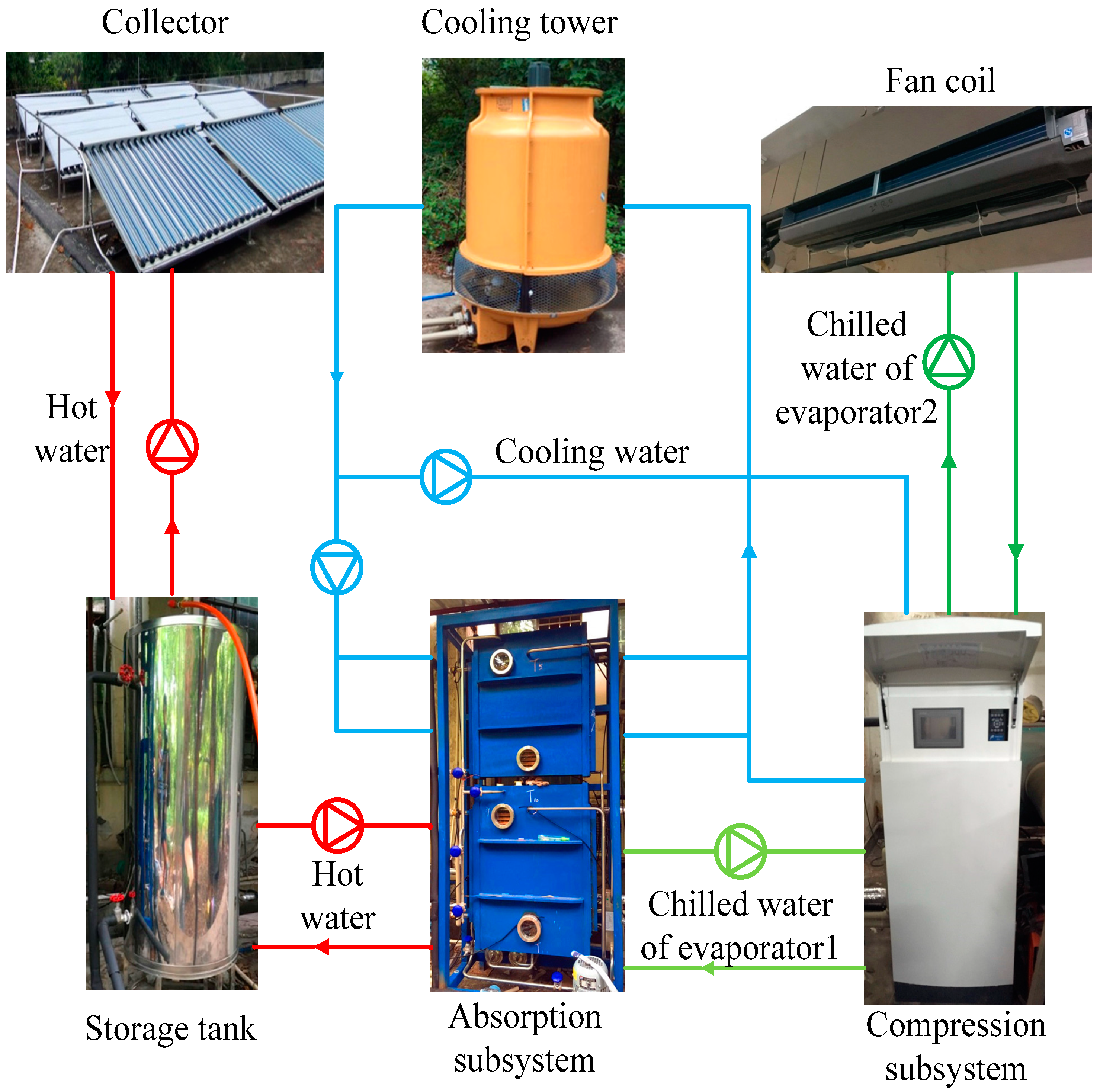
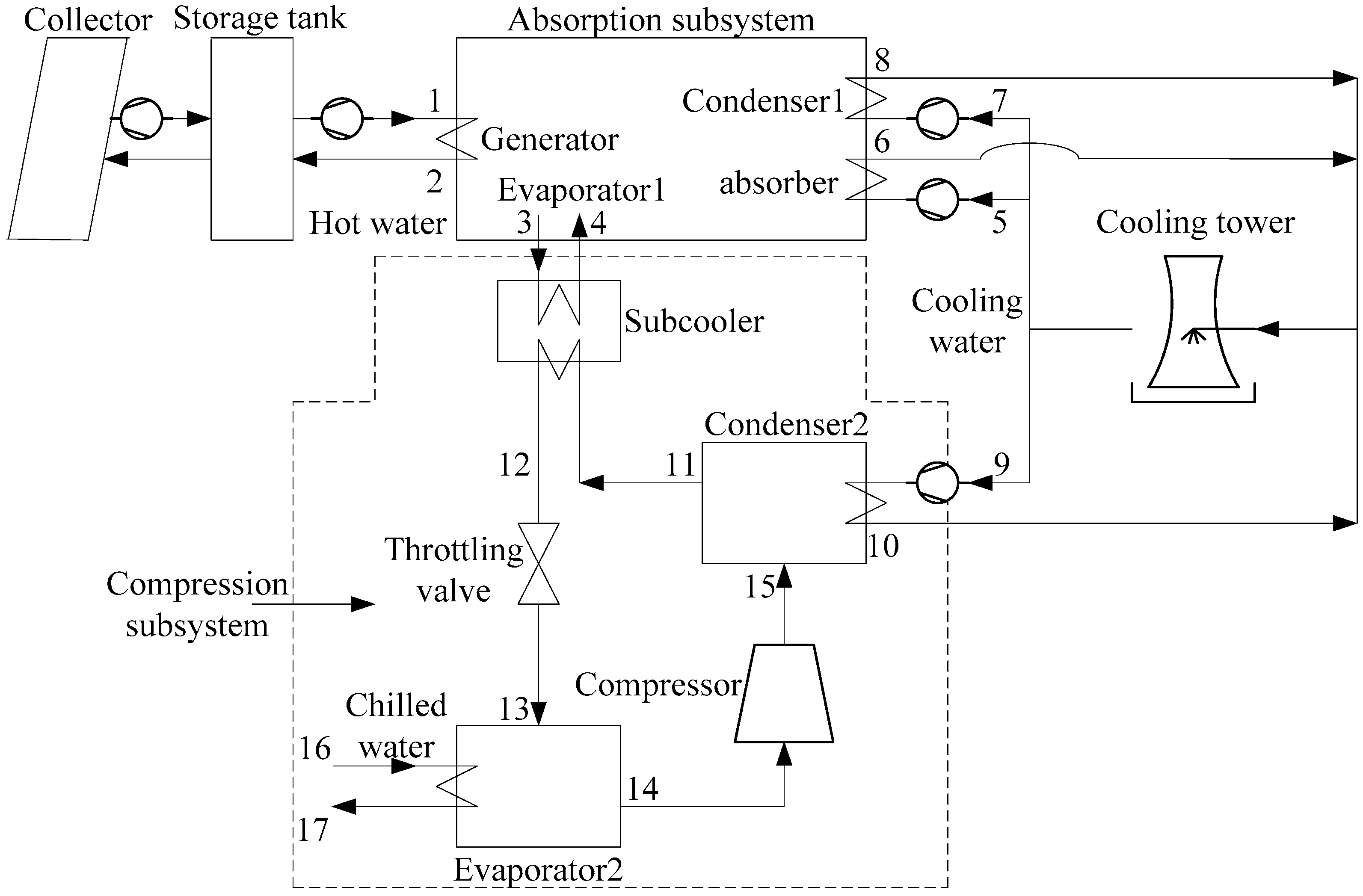
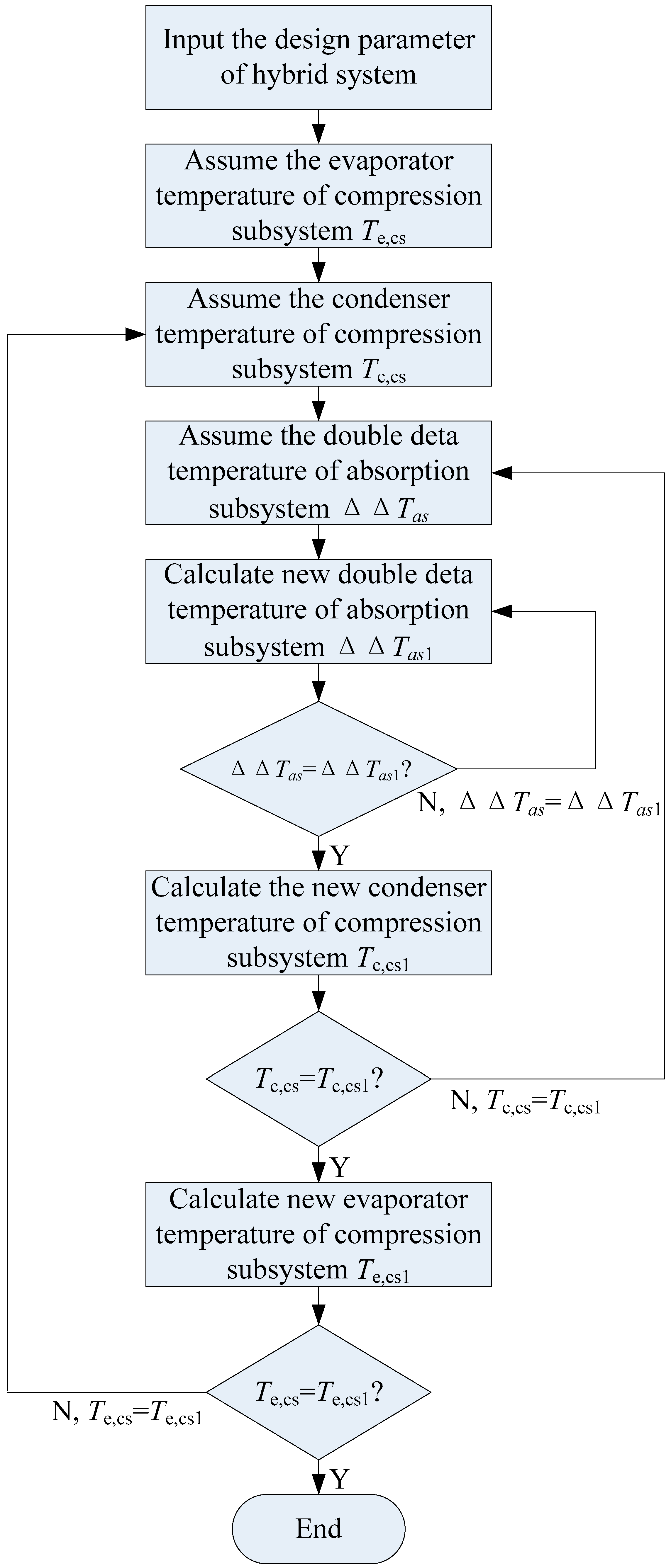
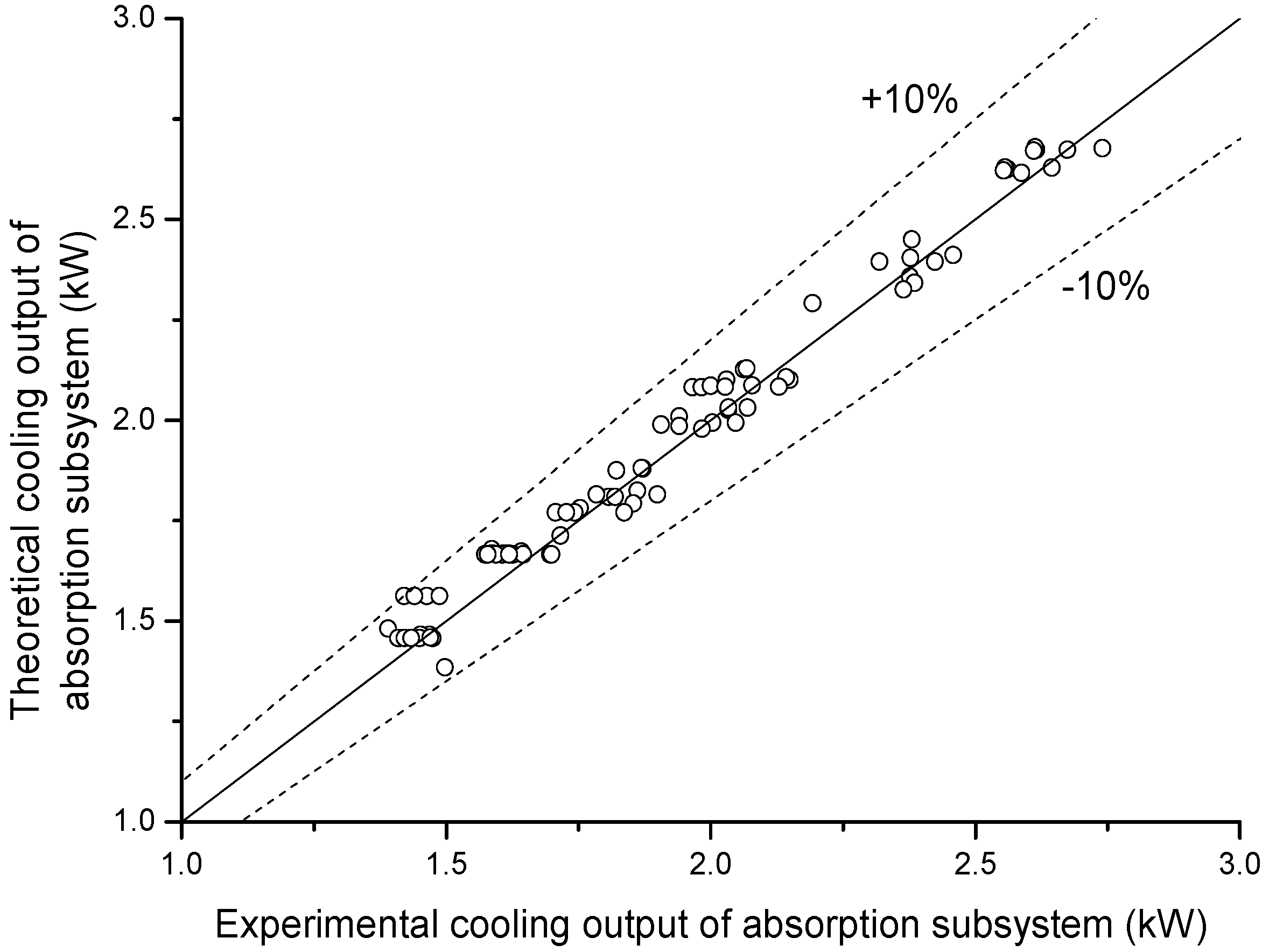
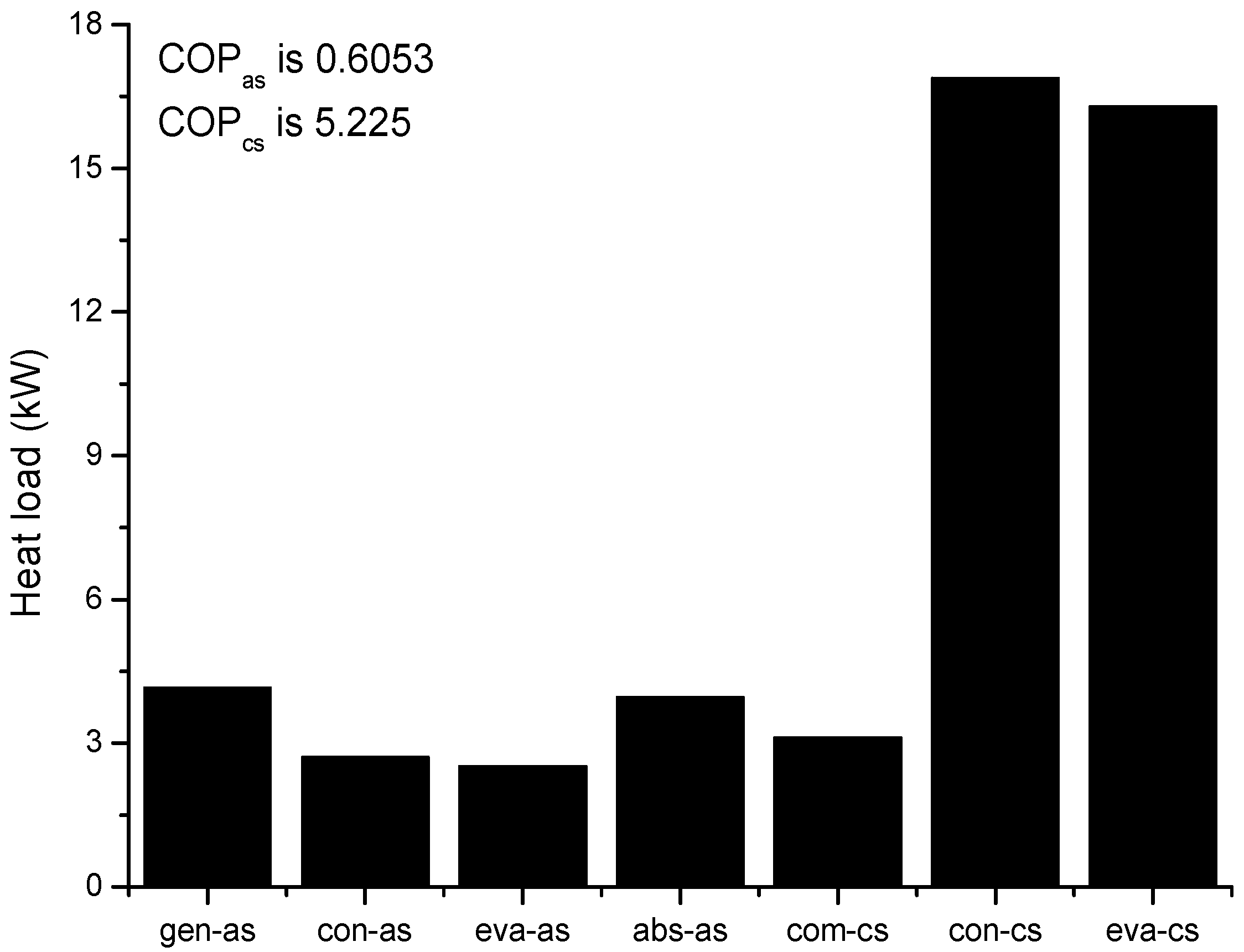
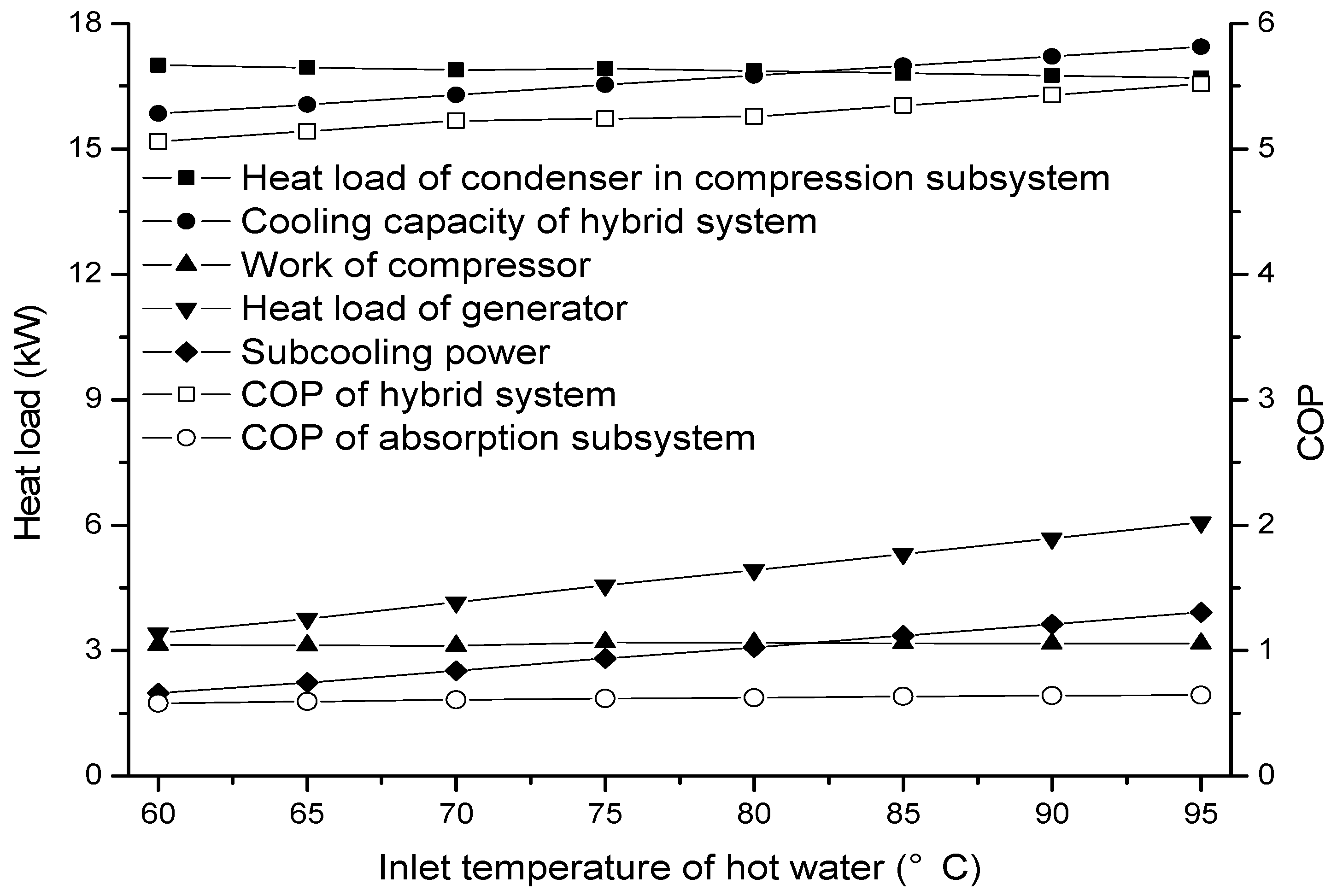
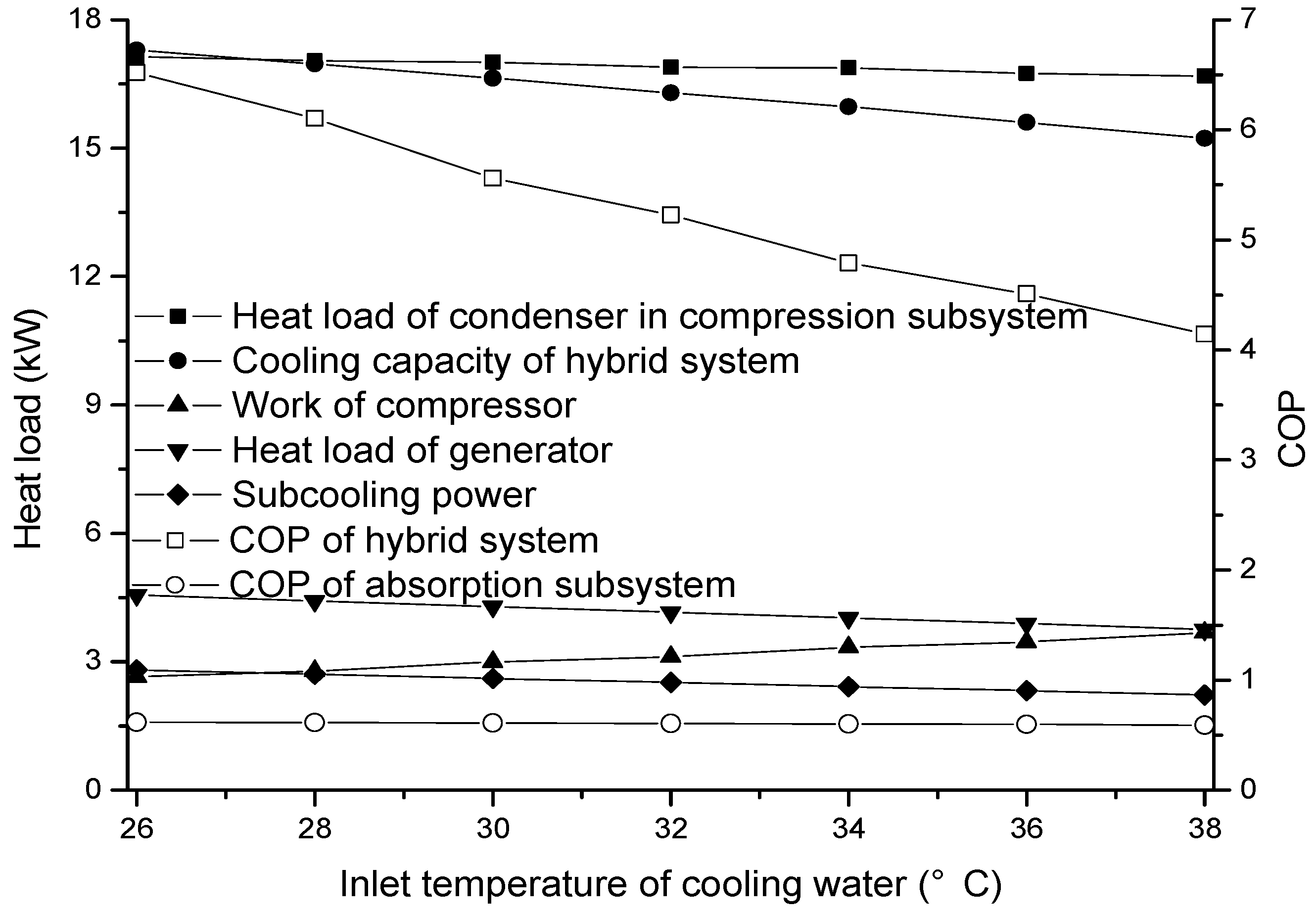
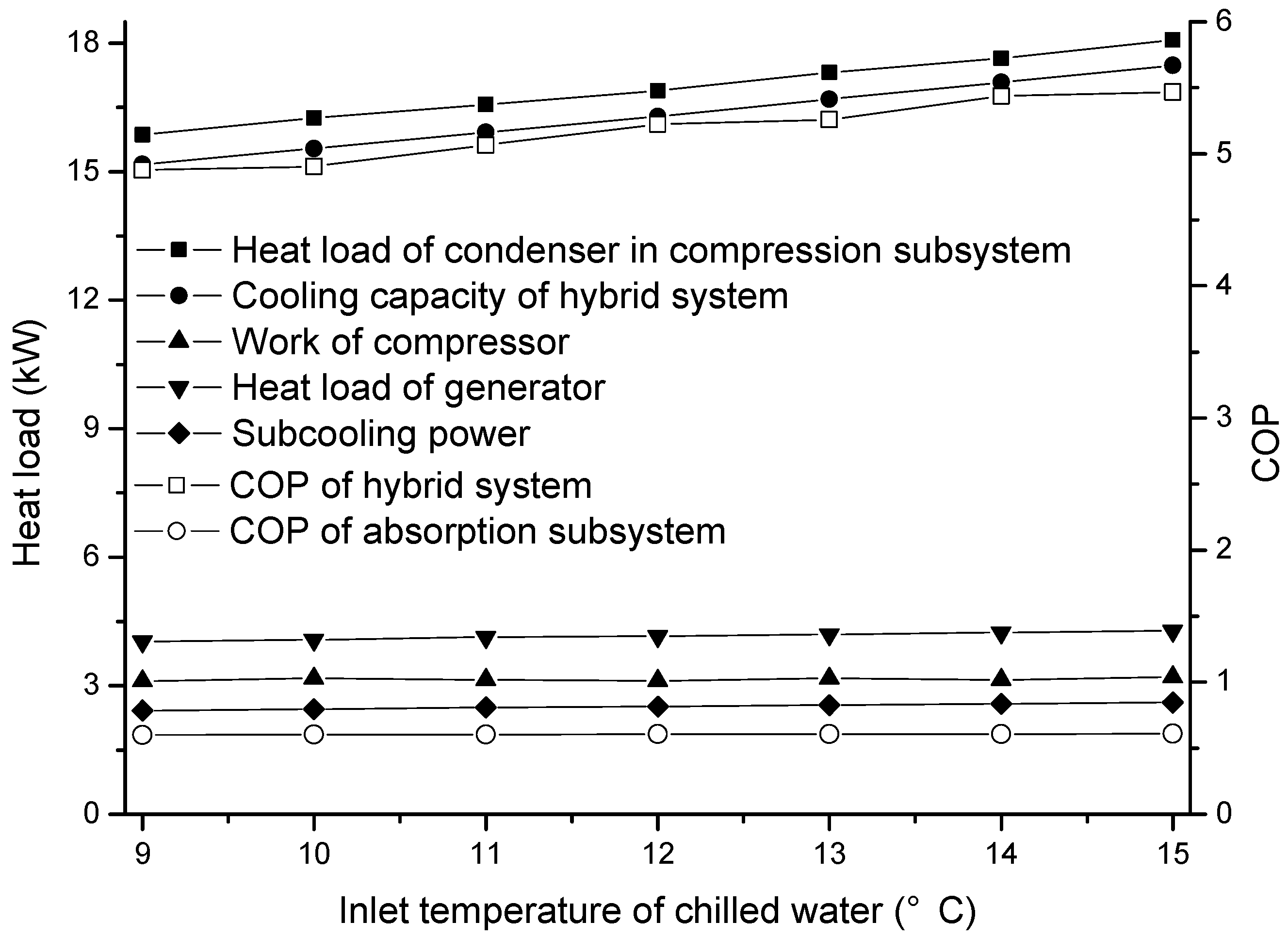
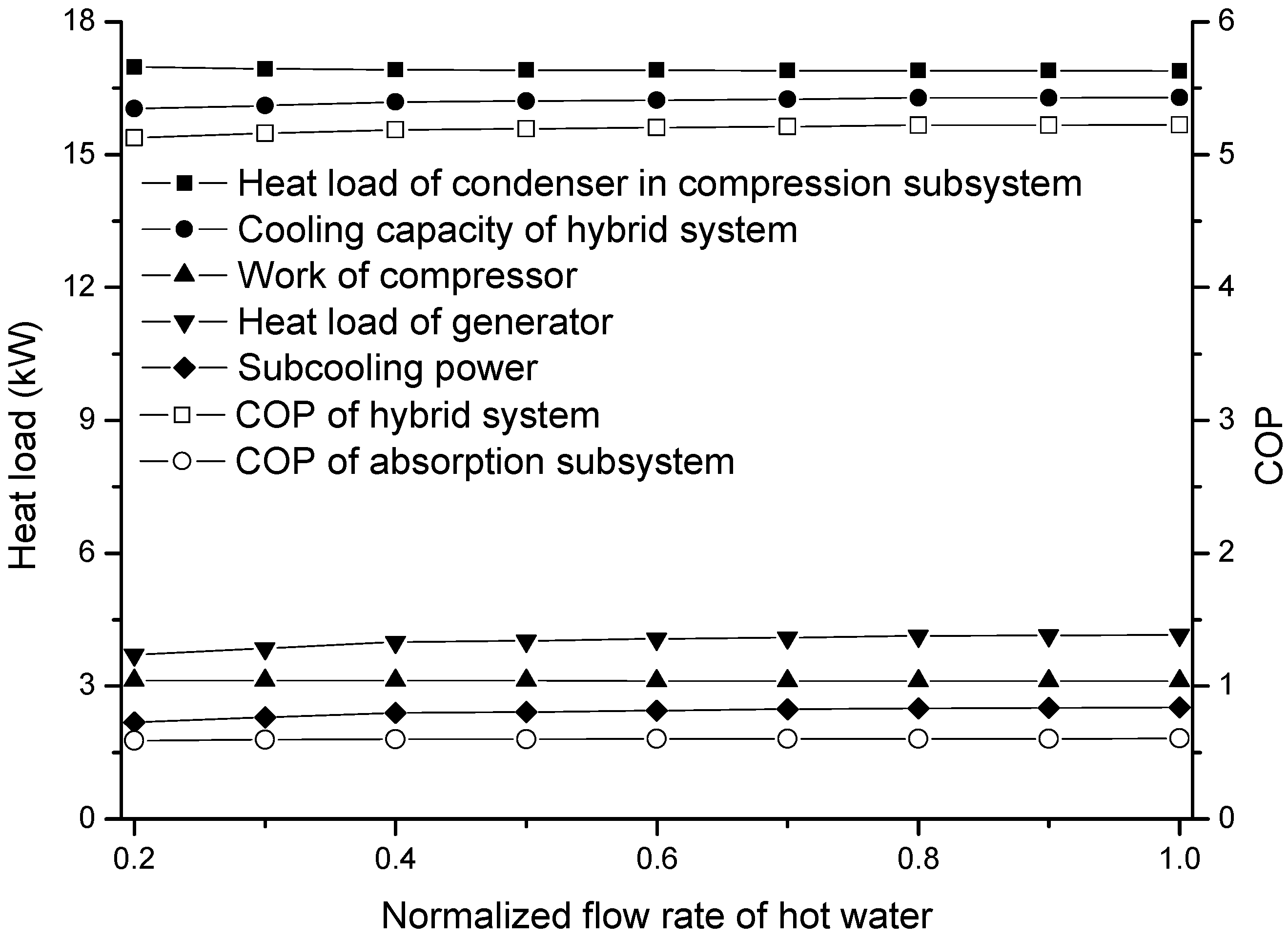
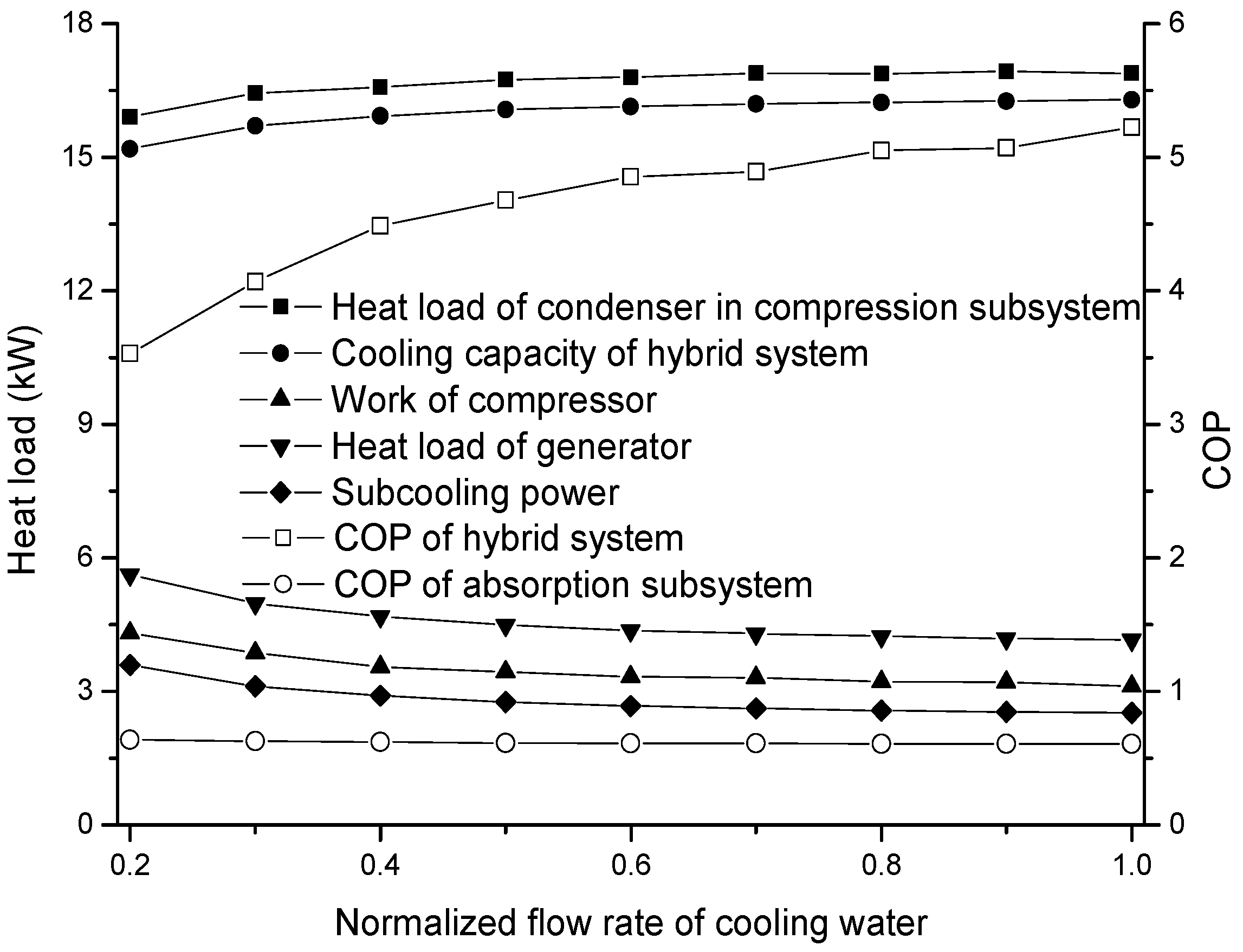
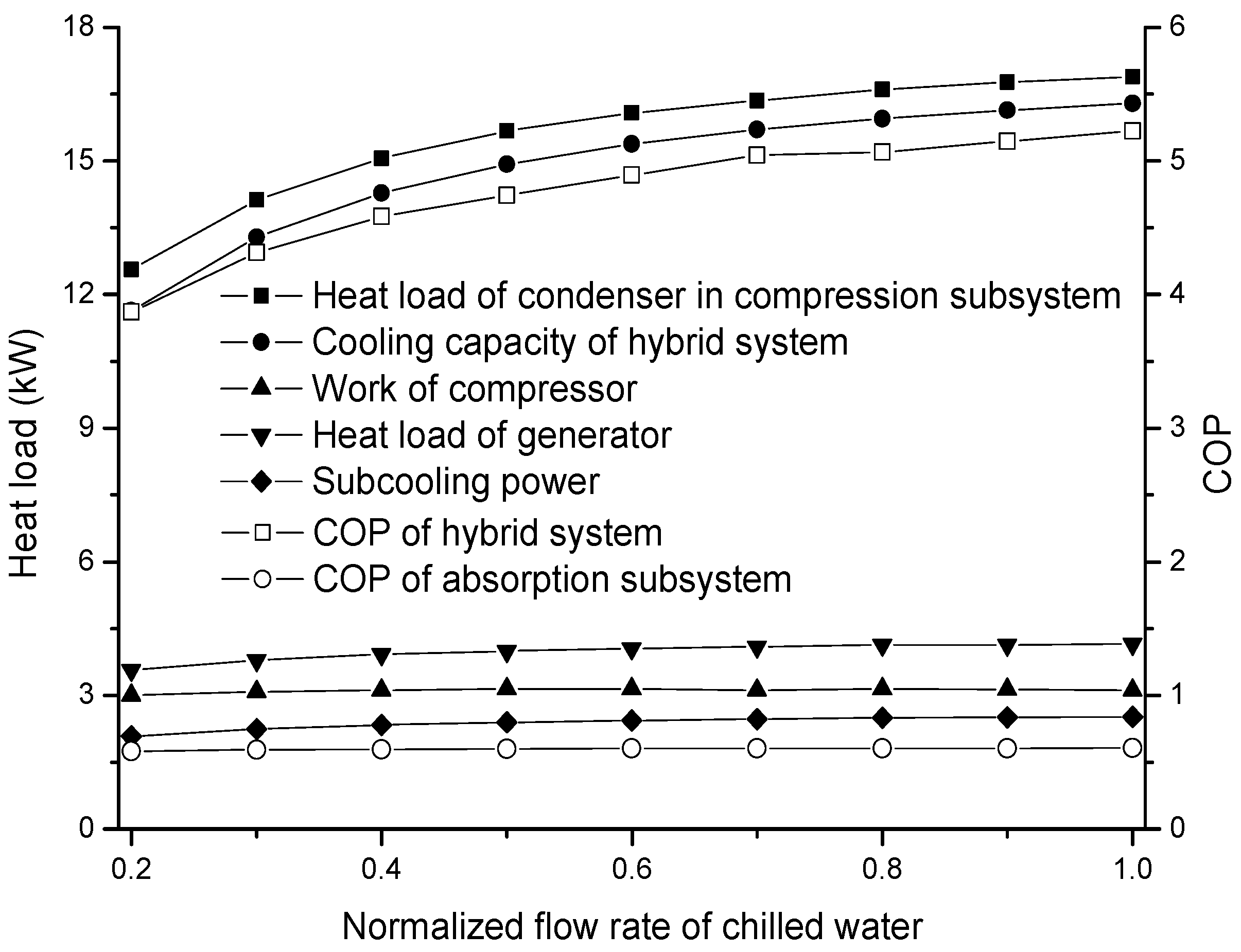
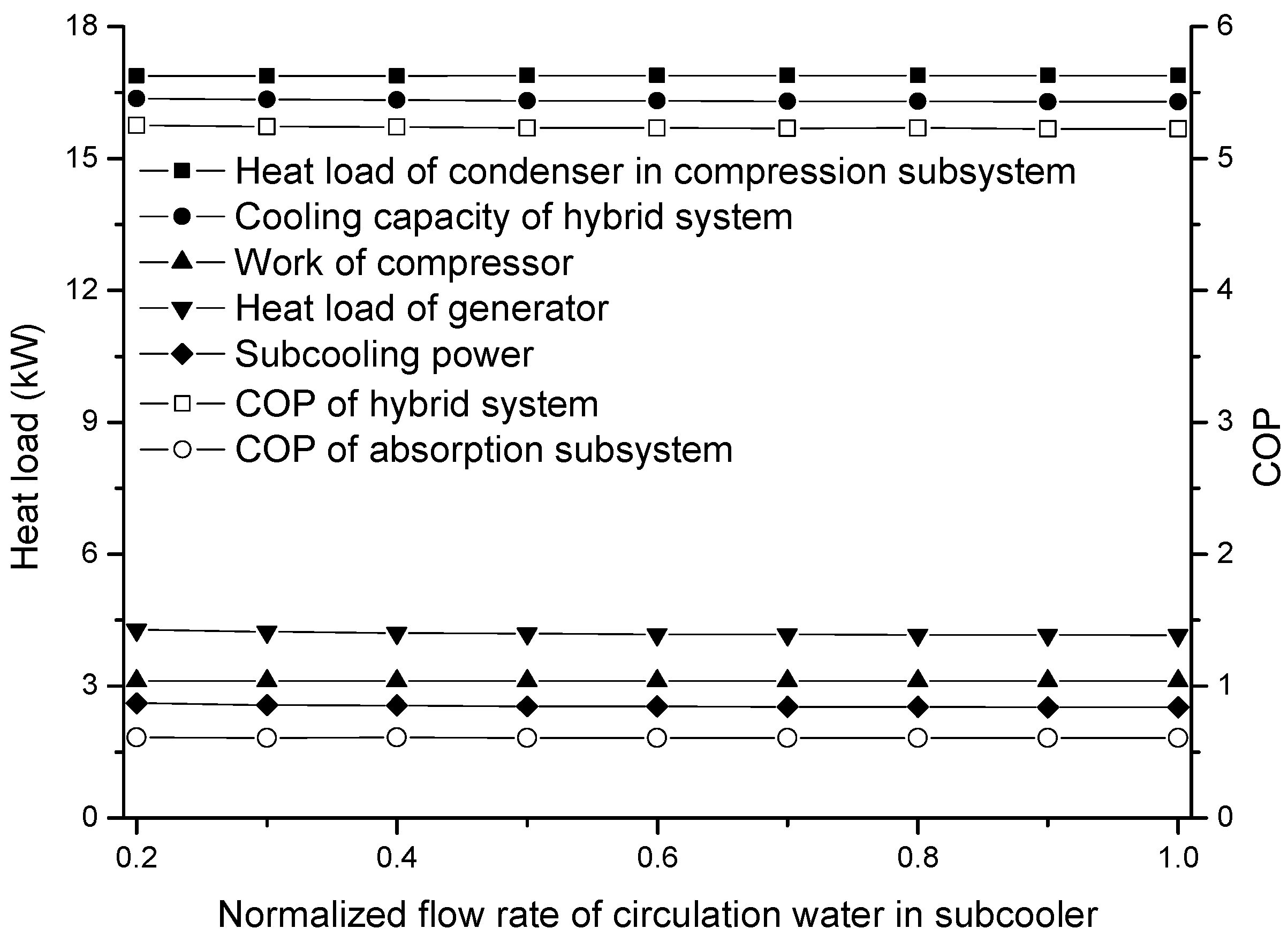
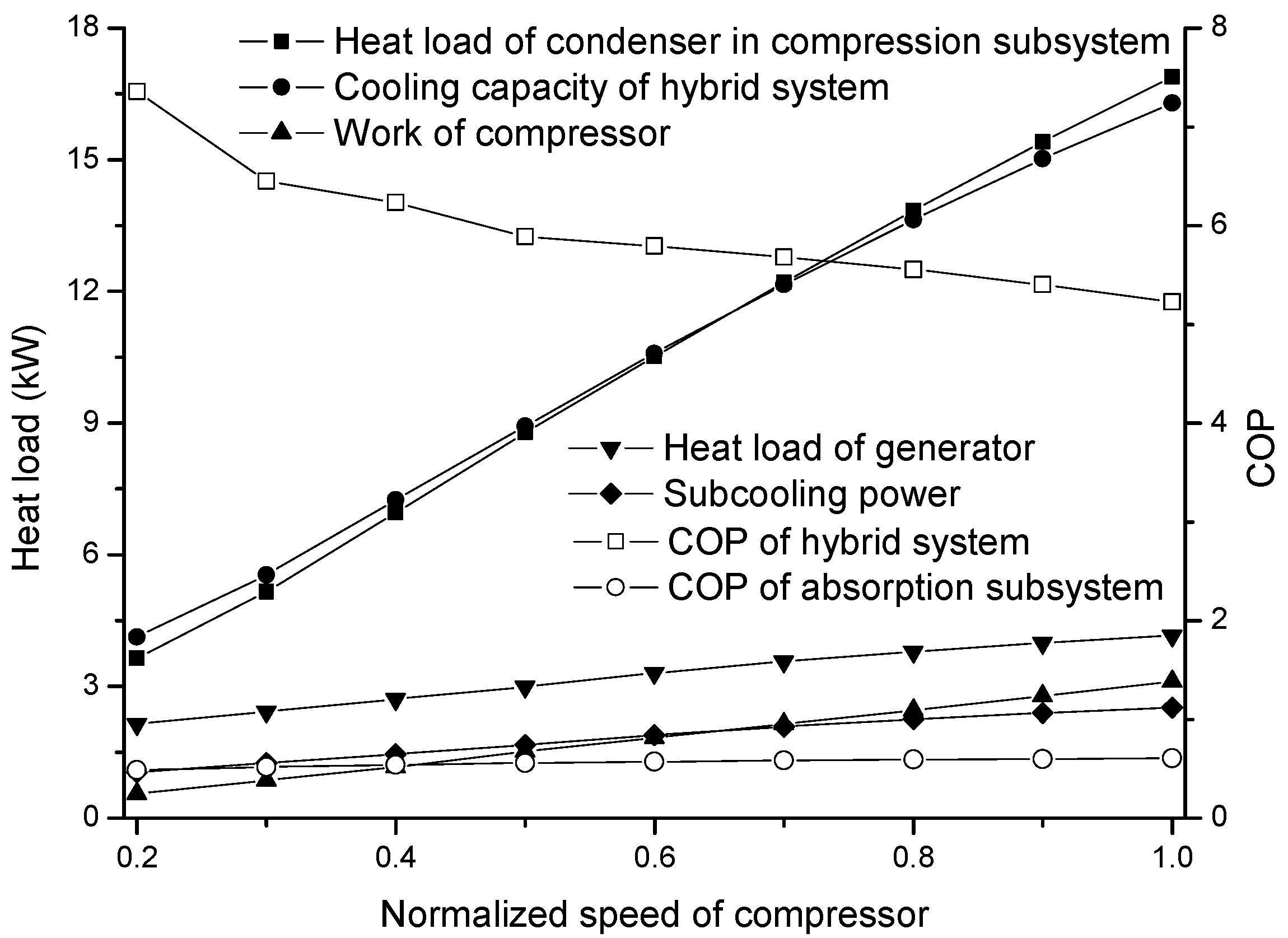
| Parameter | Base Condition | Range |
|---|---|---|
| () | 0.7347 | - |
| () | 0.8224 | - |
| () | 1.07 | - |
| () | 1.2731 | - |
| () | 4.1615 | - |
| () | 3.468 | - |
| () | 0.2264 | - |
| () | 88.4 | - |
| (°C) | 70 | 60–90 |
| (°C) | 32 | 26–38 |
| (°C) | 12 | 9–15 |
| (rpm) | 1800 | 0.2–1.0 (Normalized) |
| () | 0.278 | 0.2–1.0 (Normalized) |
| () | 0.25 | - |
| () | 0.222 | - |
| () | 0.292 | 0.2–1.0 (Normalized) |
| () | 0.908 | 0.2–1.0 (Normalized) |
| () | 0.733 | 0.2–1.0 (Normalized) |
| Test Equipment | Accuracy |
|---|---|
| Turbine flowmeter | 0.5% of the reading |
| T-type Thermocouple | 2.5% of the reading |
| Item | Model | Experiment | Relative Error |
|---|---|---|---|
| (°C) | 31.53 | 32.7 | 3.58% |
| (°C) | 10.0 | 9.9 | 1.01% |
| (°C) | 59.68 | 59.4 | 0.47% |
| (°C) | 14.28 | 14.1 | 1.28% |
| Point | p (kPa) | T (°C) | Point | p (kPa) | T (°C) |
|---|---|---|---|---|---|
| 1 | 100 | 70 | 10 | 100 | 36.43 |
| 2 | 100 | 66.44 | 11 | 2340.9 | 38.66 |
| 3 | 100 | 18.8 | 12 | 2340.9 | 22.18 |
| 4 | 100 | 16.75 | 13 | 909.36 | 4.16 |
| 5 | 100 | 32 | 14 | 909.36 | 4.16 |
| 6 | 100 | 36.25 | 15 | 2340.9 | 61.16 |
| 7 | 100 | 32 | 16 | 100 | 12 |
| 8 | 100 | 34.58 | 17 | 100 | 6.71 |
| 9 | 100 | 32 |
© 2018 by the authors. Licensee MDPI, Basel, Switzerland. This article is an open access article distributed under the terms and conditions of the Creative Commons Attribution (CC BY) license (http://creativecommons.org/licenses/by/4.0/).
Share and Cite
Li, Z.; Yu, J.; Chen, E.; Jing, Y. Off-Design Modeling and Simulation of Solar Absorption-Subcooled Compression Hybrid Cooling System. Appl. Sci. 2018, 8, 2612. https://doi.org/10.3390/app8122612
Li Z, Yu J, Chen E, Jing Y. Off-Design Modeling and Simulation of Solar Absorption-Subcooled Compression Hybrid Cooling System. Applied Sciences. 2018; 8(12):2612. https://doi.org/10.3390/app8122612
Chicago/Turabian StyleLi, Zeyu, Jianting Yu, Erjian Chen, and Yue Jing. 2018. "Off-Design Modeling and Simulation of Solar Absorption-Subcooled Compression Hybrid Cooling System" Applied Sciences 8, no. 12: 2612. https://doi.org/10.3390/app8122612
APA StyleLi, Z., Yu, J., Chen, E., & Jing, Y. (2018). Off-Design Modeling and Simulation of Solar Absorption-Subcooled Compression Hybrid Cooling System. Applied Sciences, 8(12), 2612. https://doi.org/10.3390/app8122612






